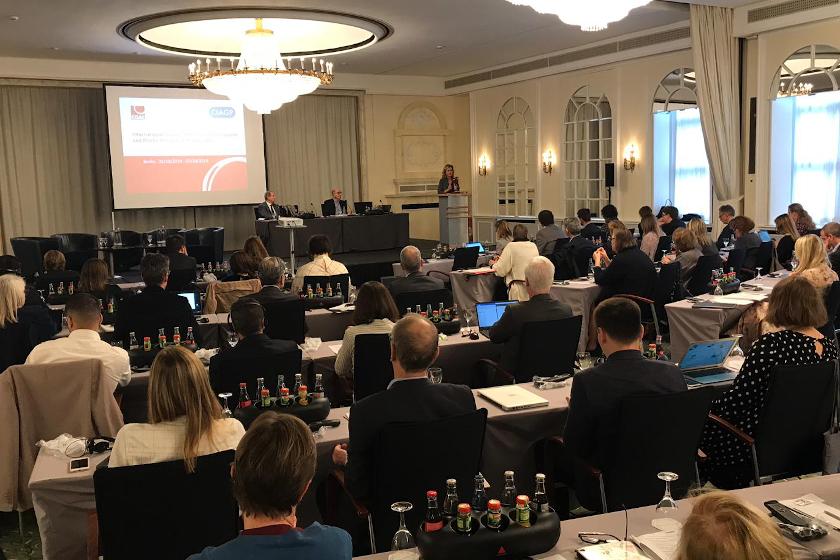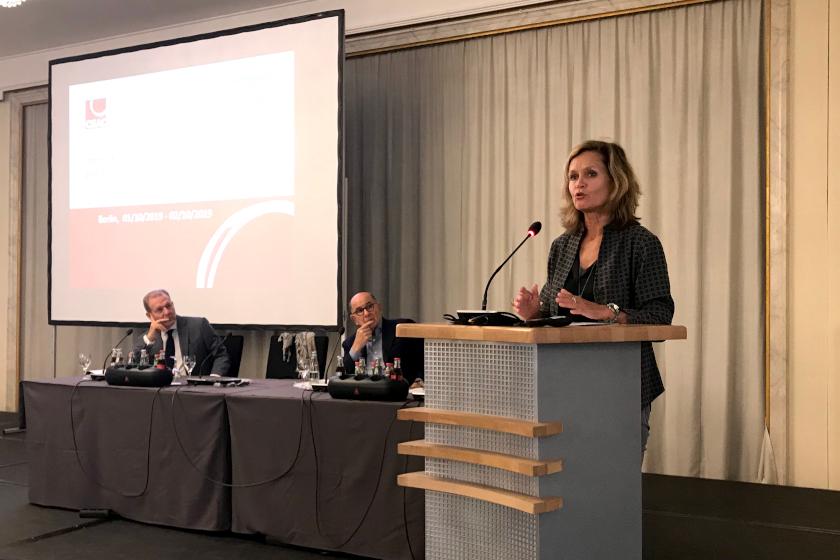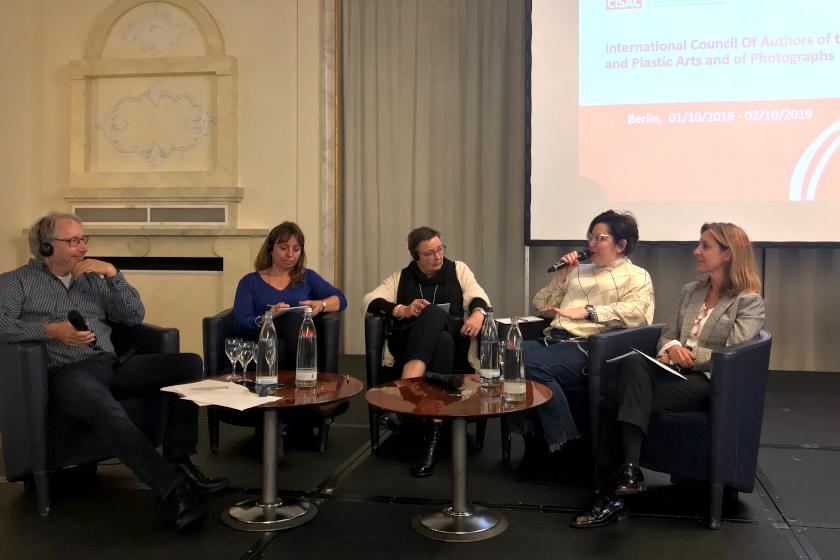How to adapt to digital unifies visual arts societies at CIAGP congress in Berlin

The visual arts repertoire is undergoing rapid changes technologically and legislatively due to the digital environment. New tools have emerged, such as the Automated Image Recognition (AIR) tool to identify works on websites to track uses and facilitate collecting for artists and their heirs. New national and regional laws and reforms have also been underway to better align legislation to the reality of today’s visual arts market.
The CISAC visual arts council CIAGP met in Berlin to examine efforts to adapt to changes in the digital environment at its annual meeting on October 1st and 2nd. The event was held in Germany in recognition of the 50th anniversary of Bild-Kunst, which American sculptor and CIAGP President Alex Shapiro underscored as instrumental for artists in Germany.
The need for change was underscored in the opening address by former Member of European Parliament and Committee on Culture and Education Vice President Helga Trüpel. Trüpel was pivotal in reforming copyright at the European Parliament, particularly with the EU Copyright Directive adopted earlier in 2019. She pointed out that many people still held the belief that the advent of digital would bring a “paradise on earth”, but reality has contradicted this narrative and continues to compromise the livelihoods of artists.
CIAGP Rapporteur General Javier Gutierrez Vicén heralded her efforts, calling Trüpel a “great defender of the rights of visual artists in Europe.”

Roundtables on audiovisual rights and digital rights examined the effects of these changes on visual artists’ rights. For audiovisual rights, discussions focussed on how to increase collections on behalf of creators without giving in to pressure to cede rights during negotiations. Visual arts societies expressed concern over the practice of buyouts and how to ensure that broadcasters pay for the use of works, especially with the advent of video on-demand in recent years.
For digital rights, legislation has traditionally lagged but the recent European Union’s Directive on Copyright in the Digital Single Market and the Copyright Directive and the Satellite and Cable Directive have become an example for the repertoire to export elsewhere. CIAGP members indicated that, in the world, any update to legislation for visual artists rights for digital will have to be efficient, transparent and require collective management. Members called to update the Rio Rules, which define society conduct and behaviour towards creators, to the digital environment.

Digital is significant for visual arts. YouTube has more works from creators than all traditional television channels combined, according to ADAGP Director General Marie-Anne Ferry-Fall. Societies have developed tools, particularly AIR, to efficiently and quickly identify works online. New tools like AIR can be used to support negotiations with users.
Societies shared other recent visual arts repertoire news. North America saw mergers combining ARS and VAGA in the United States and SODRAC and SOCAN in Canada. In Brazil, AUTVIS started negotiations to update legislation to include digital rights. Chile is seeing support for a resale right bill at its Chamber of Deputies. In Mexico, the resale right tariff percentage is in negotiation. Argentina is introducing a new resale right bill in its Chamber of Deputies, which has support of the Copyright Office and the National Arts Fund.
Latin America saw significant progress with the development and support of new and existing societies. The Latin American AGP Society Technical Group is in discussions with music repertoire societies to create visual arts repertoire departments. The region is also encouraging societies to sign new reciprocal agreements to legitimise Latin American visual arts societies.
Four resolutions supporting Argentina, Brazil, Chile and Mexico were approved in Berlin. The next CIAGP meeting will be held in Madrid on June 23rd and 24th, 2020.